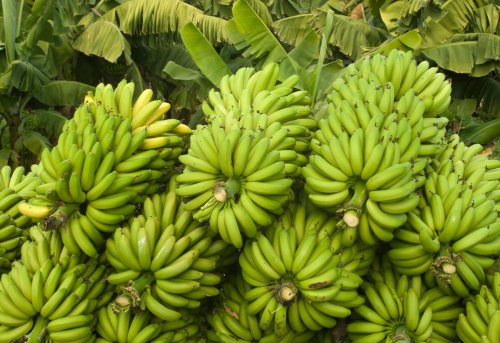Banana Exporting from India: The Process, Challenges, and Opportunities

Strong 8k brings an ultra-HD IPTV experience to your living room and your pocket.
India is the world’s largest producer of bananas, and as a banana exporter in India, it plays a major role in supplying bananas to international markets. With its fertile land and ideal weather conditions, India grows bananas in abundance, making it a top choice for buyers worldwide. However, exporting bananas from India comes with its own set of challenges. In this blog, we will explore the process of banana exports, the hurdles faced by exporters, and the opportunities that make this industry so promising.
The Process of Banana Exporting from India
The journey of exporting bananas from India involves several important steps to ensure the fruit reaches international markets in perfect condition. Let’s look at the process:
1. Cultivation and Harvesting
Banana farming in India mostly takes place in tropical regions like Maharashtra, Tamil Nadu, Andhra Pradesh, and Gujarat. These areas provide the right conditions for growing a variety of bananas, such as Cavendish, Red bananas, and Green bananas. Bananas are usually harvested while still green, which allows them to ripen naturally during transportation. This way, they arrive at their destination fresh and ready for consumption.
2. Sorting and Packaging
After harvesting, the bananas are sorted based on size, color, and quality. This step is important to meet the specific needs of international customers. The bananas are then packed carefully in strong cartons that allow airflow to prevent spoilage. Special packaging materials like cushioned boxes and plastic wraps are used to ensure the bananas don’t get damaged during transport.
3. Quality Control and Inspection
As a banana exporter in India, it’s essential to maintain high-quality standards. Before shipment, the bananas go through rigorous quality checks to make sure they meet international safety standards. Inspectors check for things like pesticide residues, any signs of diseases, and the fruit’s overall quality, ensuring the bananas are perfect for export.
4. Documentation and Export Regulations
Exporting bananas from India requires proper documentation, including certificates of origin and phytosanitary certificates. Indian exporters must also follow the regulations set by the importing country. This helps prevent delays or the rejection of shipments. Meeting these export regulations ensures the bananas can be smoothly transported across borders.
5. Shipping and Distribution
Once all the paperwork is done, the bananas are shipped to their destination. Most bananas are sent by sea in refrigerated containers that maintain the right temperature and humidity during the journey. This helps keep the bananas fresh. After reaching their destination, the bananas are distributed to markets, including supermarkets, wholesalers, and local vendors.
Challenges in Banana Exporting from India
While banana exports from India are a great business opportunity, there are several challenges exporters face:
1. Supply Chain and Logistics
Bananas are highly perishable, so they need to be handled carefully and shipped quickly. The timing of the shipment is crucial, especially during the monsoon season or periods of bad weather. Delays in transport can result in spoiled or damaged fruit, making it hard to meet the demand in international markets.
2. Price Fluctuations
The prices of bananas can change based on factors like weather, labor costs, and international demand. These price fluctuations can make it difficult for exporters to maintain steady profit margins. The cost of packaging and shipping materials also varies, adding to the overall cost of banana exports.
3. Competition from Other Countries
India faces stiff competition from other banana-producing countries like the Philippines, Ecuador, and Costa Rica. These countries also export bananas, which can drive prices down and reduce market share for Indian exporters. To stay competitive, Indian exporters need to offer high-quality bananas and ensure timely deliveries.
4. Meeting International Standards
Every country has its own set of standards when it comes to food safety, pesticide residues, and quality. Indian banana exporters must comply with these standards to avoid shipments being rejected. This often requires investing in better technologies and processes to meet the demands of international markets.
Opportunities in the Banana Export Industry
Despite the challenges, the banana export industry from India holds tremendous potential. Here are some of the opportunities for growth:
1. Rising Global Demand
Bananas are one of the most consumed fruits worldwide, and their popularity continues to grow. The rising middle class in emerging markets and an increasing number of health-conscious consumers are driving the demand for bananas. As a banana exporter in India, this is a great opportunity to expand into new markets where bananas are in high demand.
2. Expanding Markets
India’s banana exports are not limited to traditional markets in the Middle East and Southeast Asia. With new global trade agreements, there is an opportunity to reach newer markets in Europe, North America, and other regions. This opens up a world of possibilities for Indian exporters to grow their businesses and diversify their customer base.
3. Technology and Innovation
The use of modern technology can help improve the efficiency and quality of banana exporting from India. For example, better packaging, refrigeration systems, and supply chain management can reduce waste and extend the shelf life of bananas. Embracing such innovations will allow Indian exporters to stay competitive and grow their businesses in the long run.
4. Organic Banana Exports
With a growing demand for organic produce worldwide, Indian banana exporters can tap into the organic banana market. Offering certified organic bananas can attract health-conscious customers who are willing to pay a premium for sustainably grown fruit. This market niche can lead to higher profits and loyal customers.
Conclusion
Banana exporting from India is a promising industry with huge growth potential. While the journey from farm to international market comes with its share of challenges such as supply chain issues, price fluctuations, and international competition the opportunities for success are abundant. By leveraging India’s position as a leading banana producer, exporters can tap into new markets, improve quality standards, and adapt to emerging trends like organic farming.
As global demand for bananas continues to rise, now is the perfect time for Indian exporters to seize these opportunities, stay competitive, and meet international market needs. Whether through technological innovation, expanding into new regions, or focusing on organic produce, the future of banana exports from India is bright.
Note: IndiBlogHub features both user-submitted and editorial content. We do not verify third-party contributions. Read our Disclaimer and Privacy Policyfor details.


